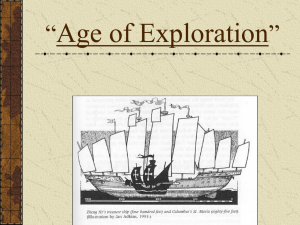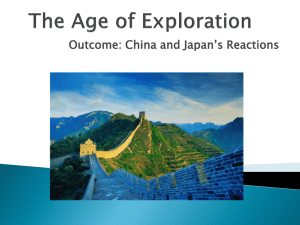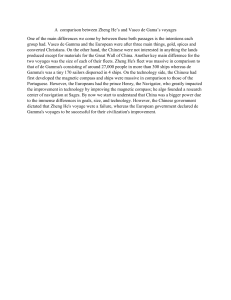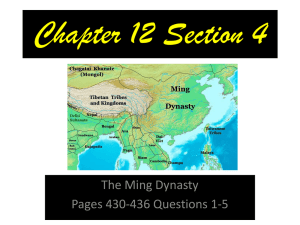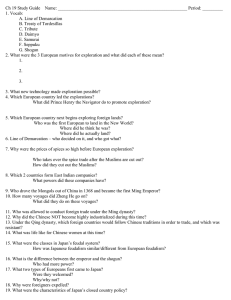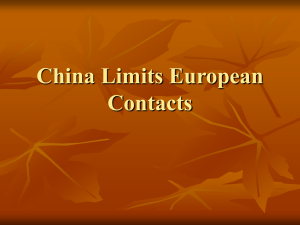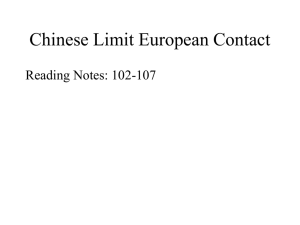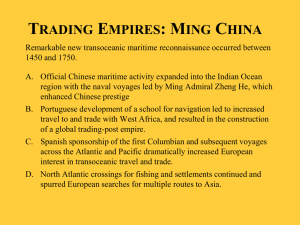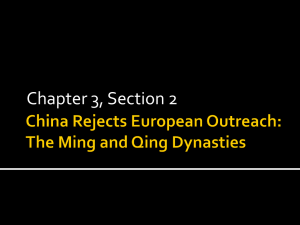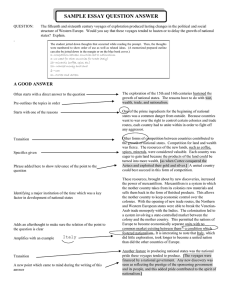A Ming Naval Expedition
advertisement
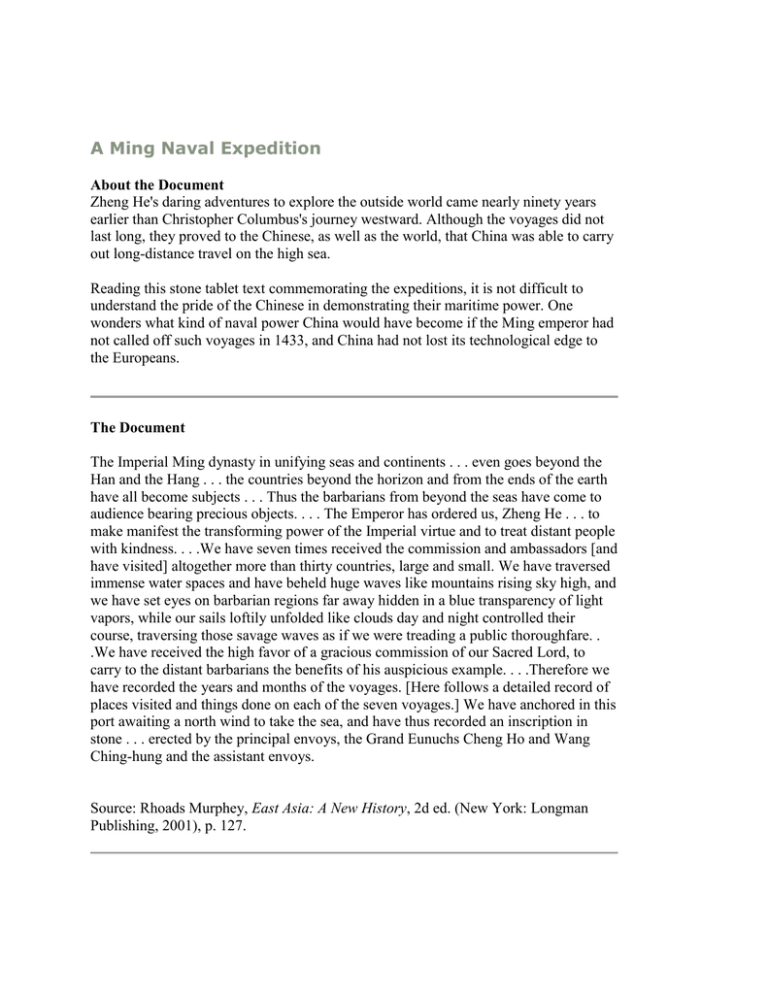
A Ming Naval Expedition About the Document Zheng He's daring adventures to explore the outside world came nearly ninety years earlier than Christopher Columbus's journey westward. Although the voyages did not last long, they proved to the Chinese, as well as the world, that China was able to carry out long-distance travel on the high sea. Reading this stone tablet text commemorating the expeditions, it is not difficult to understand the pride of the Chinese in demonstrating their maritime power. One wonders what kind of naval power China would have become if the Ming emperor had not called off such voyages in 1433, and China had not lost its technological edge to the Europeans. The Document The Imperial Ming dynasty in unifying seas and continents . . . even goes beyond the Han and the Hang . . . the countries beyond the horizon and from the ends of the earth have all become subjects . . . Thus the barbarians from beyond the seas have come to audience bearing precious objects. . . . The Emperor has ordered us, Zheng He . . . to make manifest the transforming power of the Imperial virtue and to treat distant people with kindness. . . .We have seven times received the commission and ambassadors [and have visited] altogether more than thirty countries, large and small. We have traversed immense water spaces and have beheld huge waves like mountains rising sky high, and we have set eyes on barbarian regions far away hidden in a blue transparency of light vapors, while our sails loftily unfolded like clouds day and night controlled their course, traversing those savage waves as if we were treading a public thoroughfare. . .We have received the high favor of a gracious commission of our Sacred Lord, to carry to the distant barbarians the benefits of his auspicious example. . . .Therefore we have recorded the years and months of the voyages. [Here follows a detailed record of places visited and things done on each of the seven voyages.] We have anchored in this port awaiting a north wind to take the sea, and have thus recorded an inscription in stone . . . erected by the principal envoys, the Grand Eunuchs Cheng Ho and Wang Ching-hung and the assistant envoys. Source: Rhoads Murphey, East Asia: A New History, 2d ed. (New York: Longman Publishing, 2001), p. 127. Analysis Questions 1. 2. 3. 4. 5. How did the Chinese view their overseas expeditions? What is the point of the description of the weather and waves on the high sea? What might be the major contributions of these Chinese voyages to the world? What role was played by the imperial power in China’s overseas expeditions? What was China’s view of itself and the world?
